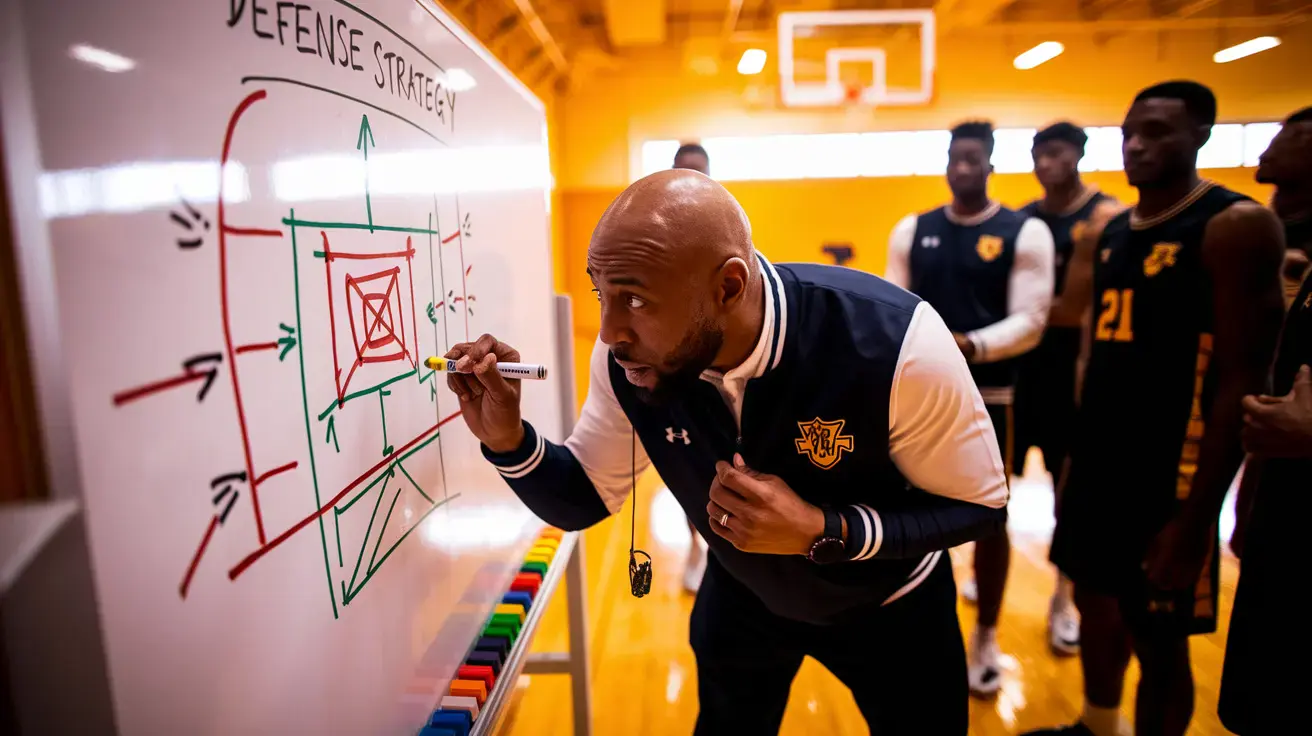Leaders are Born and Made: Developed Skills and Inborn Characteristics Combined
Explore how leadership blends innate traits with learned skills, showing why great leaders are both born and made.

Leaders are both born and made. Psychological research reveals that some qualities, including openness and emotional stability, are genetically connected, whereas fundamental abilities, including clear talk, planning, and team care, develop through education and experience. Business, health, and public service case studies demonstrate consistent improvements when individuals practice, seek feedback, and embrace challenges. Early life can shape confidence, but later opportunities, such as mentors and just systems, improve group outcomes. Aids that assist range from goal setting, peer coaching, and simple habits that monitor time and mood. Stories from varied cultures echo the same arc: start with a spark, then build with support. The following sections map key skills, paths, and steps that fit work.
" Confident leaders manifest charisma, quick wits, and calm confidence early. "
Key Takeaways
- Something in between, leaders are both born and made. So begin by discovering your raw gifts and then establish goals to develop complementary skills through training and experience.
- Innate qualities such as emotional intelligence, curiosity, and determination often show early. Use assessments to understand your personality profile and channel it into constructive leadership behaviors.
- Intentional practice, mentoring, and diverse experience speed up development. Set goals, get feedback, and accept stretch assignments that broaden your decision-making and communication skills.
- The context, followers, and trust do. Read the culture before acting, talk openly, and rely on regular ethical behavior to bond your team.
- Science and research offer practical tools for development. Use validated assessments, coaching, and evidence-based programs to refine your leadership and decision-making.
- Global leadership requires cultural intelligence and adaptability. Create varied networks, discover non-native work cultures, and prepare to manage across time zones and cultural differences.

The Leadership Equation
Great leaders blend innate leadership traits with abilities they develop through leadership training. Nature provides a head start, while practice and feedback transform that spark into effective leadership across teams, firms, and communities.
1. Innate Traits
Confident leaders manifest charisma, quick wits, and calm confidence early. Most of us remember a classmate who coordinated a group assignment without drama or a junior ball player who silenced a rattled huddle. While these qualities aren't a guarantee of effective leadership, they facilitate stepping up into leadership roles.
Twin studies indicate a genetic share of leadership of roughly 30%. That doesn't settle destiny, but it steers who auditions for parts and appears believable as a future leader. The Big Five personality traits—extraversion, conscientiousness, openness, agreeableness, and neuroticism—contain heritable components, influencing how individuals respond to risk, feedback, and stress in their leadership style.
Emotional intelligence and grit can emerge in childhood and early work life. A level-headed peer in conflict or a young colleague who maintains focus on objectives under stress often indicates lasting promise as an impactful leader.
Particular academics highlight 'hereditary genius,' but the data is inconclusive. Not one trait or set is shared among all leaders. Leadership straddles disciplines—management theory, social theory, political science, and industrial-organizational psychology—where valuable leadership characteristics continue to be debated.
2. Acquired Skills
Skills develop through intentional practice, usually thousands of hours, along with mentoring, coaching, and rigorous programs focusing on effective leadership. Key topics include delivering clear communication, listening, decision hygiene, conflict resolution, ethics, and coaching others. Leadership development programs create a common language and habits essential for cultivating strong leaders. Executive coaching sharpens judgment, broadens context, and mitigates blind spots. Effective leaders continuously refine their leadership style. They run post-mortems, seek 360° input, test new methods, and adjust to changing markets and diverse teams. Over the years, humility and 'professional will' reinforce each other.
3. Environmental Catalysts
Entities define development via role design, group customs, and feedback cycles. Stretch assignments, cross-border projects, and crisis response can all accelerate maturity.
Access counts. When leadership apprenticeships are transparent and equitable, more people raise their hands. Stakeholders, peers, reports, and clients form a group that dictates what "effective leadership" looks like in practice.
4. The Synthesis
Leadership happens when native wiring encounters learned craft within a context that challenges and rewards it.
| Natural abilities | Learned solutions |
|---|---|
| Presence, poise | Communication playbooks, rehearsal |
| Curiosity, insight | Decision frameworks, data literacy |
| Empathy, social sense | Coaching methods, feedback routines |
| Drive, focus | Time systems, goal reviews |
The most effective leaders leverage their areas of strength and patch holes with hard work. Organizations can craft ladders, coaching, and equitable opportunities that respect promise and momentum while upgrading their knowledge base's legacy systems and repairing broken hyperlinks.
The Science of Leadership
Leadership research has tracked two centuries of debate on whether leaders are born or built, revealing that the solution combines both perspectives. Meta-analyses show that approximately 30% of who becomes an effective leader is genetic, while about 70% stems from experience, deliberate practice, and context. Current leadership studies, which draw from psychology, neuroscience, and organizational studies, focus on various leadership styles and domain knowledge that enable leaders to emerge across tasks and cultures. By utilizing widely accepted tools, such as 360-degree feedback, Big Five, EQ-i, Hogan, and MLQ, we can differentiate between innate leadership traits and learned skills, guiding the development of multi-year plans for aspiring leaders.
| Aspect | Trait theory | Behavioral theory |
|---|---|---|
| Core idea | Leaders possess inborn qualities | Effective actions can be learned |
| Evidence | 24–30% genetic links to role occupancy | Training improves specific behaviors |
| Limits | No single trait fits all leaders | Ignores stable dispositions |
| Examples | Confidence, IQ, conscientiousness | Coaching, feedback, situational styles |
| Assessment fit | Personality, ability tests | 360s, observation, skill rubrics |
Additionally, leadership studies outline styles that succeed in practice. Daniel Goleman identified six distinct styles, while Burns and subsequent research differentiated transactional leadership from transformational leadership, which can change thinking and inspire additional effort. High-performance teams thrive under leaders who synchronize direction, plans, and motivation strategies, fostering trust and maintaining a vivid "big picture." Programs at universities worldwide include John Adair's widely translated work and newer models like Agentic leadership by Kashif Zaman, which treat AI as a leadership amplifier, showcasing the spectrum of the leadership industry.
Psychology
Personality psychology, a branch of behavioral sciences and differential psychology, reveals why some individuals emerge as effective leaders across various contexts. Traits such as conscientiousness and emotional stability predict consistent follow-through, while openness fosters idea flow, and extraversion can enhance communication but isn't essential. Emotional intelligence, encompassing the ability to read cues, manage oneself, and show empathy, is crucial for building trust among followers and making ethical decisions, particularly when politics influence group dynamics, from local councils to the United Nations General Assembly's opening session. Motivations play a significant role; using power for the group rather than personal gain aligns with values that mitigate bias and the misleading claims often found in public discourse. Goleman's six leadership styles offer a toolkit for leaders, allowing them to adapt their approach as tasks and cultures evolve. Transformational leadership elevates goals beyond self-interest, while transactional leadership focuses on equitable exchanges. The MLQ helps in tracking these styles. Community leaders, often volunteers, develop their leadership skills through training, networks, and experience, forming the foundation for high-performance teams and achieving stronger results.
Neuroscience
Brain research charts how we detect trustworthy leaders (salient cues, physical presence) and make decisions in pressure situations (prefrontal control, threat circuits). While intelligence undergirds sophisticated judgment at senior levels, it is just part of the recipe for effective leadership. Studies indicate some 24% of leadership positions are related to genes, around 10% to ordinary upbringing, and the remainder depends on experience and tens of millions of hours of intentional practice that rewire attention, self-control, and creative insight. Early environments sculpt attention and reward systems, while later coaching and feedback polish them, illustrating why talented leaders arise across tasks and cultures and why no single trait is found among all leaders. Neuroscience further associates idea generation and evaluation with creative leadership, showing that leadership abilities can be enhanced through the thoughtful deployment of artificial intelligence. This aligns with the agentic perspective, where technology amplifies judgment, not supplants it.

Developing Leadership Potential
Leadership develops through a defined roadmap, consistent rehearsal, and numerous opportunities to learn by doing. Such a strategy mixes leadership training, mentoring, and actual projects over multiple years, because effective leadership is an ability that grows, not a native quality. Research indicates that roughly 30% of role attainment is correlated with genetics, but practice, context, and support systems are more critical. Most executives agree it's both born and made: 52% say more made, 19% more born, and 29% equally born and made. Organizations investing in leadership development solutions create the capacity to transcend any individual.
Deliberate Practice
Deliberate practice is an intentional effort to refine leadership skills. It demands defined objectives, rapid feedback cycles, and intentional discomfort. Mastery takes thousands of hours; repetition and reflection transform actions into habits.
Establish crisp goals, like 'conduct a 15-minute standup that cuts blockers in half,' and gather feedback from colleagues and subordinates. Audit your recordings, identify blind spots, and repeat next week with one modification.
- Run briefings with time-boxed Q&A to hone clarity under pressure.
- Lead a cross‑functional huddle to practice distributed leadership
- Conduct a what, so what, now what post-mortem to construct a reflection.
- Negotiate scope using contingent rewards from transactional leadership
- Hold a listening circle to train compassionate leadership
- Host a creative sprint to ignite new options and test them.
Keep a weekly log of goals, actions, results, lessons, and next steps. Small cycles are compounding.
Mentorship
Mentors—often executive team members—accelerate development by transforming lived experience into advice. We can enhance effective leadership by pairing promising traits such as curiosity, a guiding vision, integrity, passion, and real risk appetite with talented leaders who model different authority types. Charismatic authority, contrasted by Max Weber with rational-legal and traditional roles, like a parliamentary leader orchestrating party strategy, or distributed leadership where tasks are spread across teams, showcases various leadership styles. Good mentoring normalizes wise trade-offs: knowing when to use transactional tools such as contingent rewards and management-by-exception, when compassion lifts morale, and when creative leadership unlocks new paths. It frames power with tenderness, which is beneficial in disciplines contemplating sovereignty, like autocracy, which focuses power in the individual. Understanding its allure aids leaders in shielding themselves from despotic drift. Formal programs help match goals, define cadences, agree on real projects, and measure leader effectiveness by performance and satisfaction, not charisma alone. Trait leadership research and differential psychology remind us that people vary; mentoring tailors the path to the individual.
Experience
Real-world work solidifies instinct. Varied environments, such as foundations, startups, public service, and NGOs, help forge style, uncover blind spots, and challenge integrity.
- Lead a small project team with a fixed budget
- Rotate to operations for one peak season
- Chair a cross‑department task force
- Serve as a deputy on a crisis response group
Challenging assignments stretch your judgment and develop your capacity. History demonstrates that lineage and context both count. Nature composes the ground, and nurture scores the music.
Related Tips
The Follower's Influence
Followers determine who's an effective leader, how long power persists, and if a vision stands. Their opinions determine fame, while their actions verify the believability of great leaders, and their outcomes deliver the judgment. Power is mutual: leaders set direction, and followers grant permission through compliance, effort, and voice.
Perception
Perception filters who gets ahead. We associate poise, easy talk, and snap decisions with leadership, which pushes certain ones ahead while ignoring the silent, rock-steady types. Twin studies reveal that 24 to 30 percent of leadership role occupancy is tied to genetics, but the rest resides in what you learn, your context, and how others perceive you.
Bias is important. Hero worship can enhance charismatic personalities. Charisma is an example of a cross-fertilized concept associated with magnetic charisma, but the shine usually fades. Narcissistic leaders surface quickly in strange groups, then lose their pull as arrogance reveals and trust collapses.
Use rubrics to reduce bias. Mix 360 feedback, behavioral interviews, and work samples, and monitor results over time. Leaders should inquire, "How do my decisions resonate with my team and stakeholders?" Perception is information; listen to it, then recalibrate.
Context
Context dictates the rules for what works in effective leadership. Culture, risk level, industry pace, legal limits, and stakeholder mix all influence which leadership traits win trust. In a high-uncertainty environment, defined priorities and frequent check-ins soothe anxiety; freedom and mentorship count more in creative work. In state systems such as the Supreme Leader of the Democratic People's Republic of Korea, Kim Jong Un, since 2011, the party leader and commander-in-chief relies on the narrative framed by icons and the press more than in the past. Opinion leadership, the two-step flow where interpreters transport messages, can intensify hero pictures or reveal holes based on networks. Around the world, transformational leaders who switch styles fare better; cross-cultural experience and certain traits help. Before major calls, scan the terrain: values on the ground, external shocks, team skills, decision rights, and what good looks like in this place. Great leaders drift, not shift.
Trust
Trust is the foundation of effective leadership. Integrity, transparency, fair choices, and steady follow-through construct it. Moral leadership connects beliefs to everyday compromise, and followers observe who gains and who loses. Research on twins shows a 24% genetic link and only about a 10% shared-environment effect, but trust grows most through lived proof: regular updates, clear reasons for tough calls, and visible care. High-trust groups align more quickly, ideas spread earlier, and targets get hit more frequently, showcasing the importance of strong leadership skills.
Keep a simple cadence: say what you will do, do it, and explain why. Service fortifies presence; a lot of tradition resounds with it. The New Testament passage 'The Son of Man came to serve' casts power as an obligation.

Identifying Future Leaders
Spotting future leaders means mixing evidence with judgment. Use structured assessments to check fit and hands-on trials to see real behavior. Treat leadership as both nature and nurture: some studies frame it as one-third innate and two-thirds built. Often a factor in effective leadership, intelligence shows only 40 to 60 percent heritability. So, look for people who start strong and those who grow fast.
Start with a straightforward talent process. Run 360-degree feedback, cognitive and critical-thinking tests, and personality measures linked to trait theories to map stable traits. Add situational judgment tests and assessment-center simulations that mirror real work: lead a cross-border project, handle a crisis call, and coach a peer. Tie ratings to models that let leadership styles flex, like the Situational Leadership approach and Fiedler's contingency model. Test Complex Adaptive Leadership in volatile settings by giving a team light rules and checking if self-organization emerges with less oversight and more engagement.
Engage senior executives and trained leadership facilitators in panel reviews and calibration. Executives provide context on strategy and risk, and facilitators keep bias in check and ensure the process is equitable. Connect decisions to the CEO pipeline. CEOs in companies, nonprofits, and government report to boards, guide value or mission results, and occupy the apex of the C-suite. The pipeline must show range: people who can run the core, fix a unit, or build something new.
Scan for the style spectrum, not a single type. Servant leadership matters; it's proven to enhance engagement and drive extra-role effort. Starbucks and Marriott have employed it, and a study by Sen Sendjaya and James C. Sarros discovered it in high-performing companies. Check innovation leadership: Can a person spark and shape new ideas? Actionable signs include how they set a short, sharp course, clear roadblocks, and distribute credit.
- Honesty and trust
- Initiative and bias for action
- Clear, calm talk and strong listening
- Problem-solving under time and data limits
- Empathy and cross-cultural ease
- Learning speed and feedback use
- Resilience and steady mood
- Systems thinking and big-picture view
- Influence without title
- Ethical judgment
Employ data and scope. Studies link rs4950 to leadership role occupancy, yet performance gaps can hinge on effort. The spread between average and exceptional can be about 10 percent. International research indicates that future leaders emanate worldwide, with high concentrations in Mexico, Turkey, Egypt, Switzerland, and Brazil. Add development that reveals potential: early jobs with real stakes, first-time supervision, mission-critical special projects, and open or custom executive education—an area worth hundreds of millions of dollars each year. Cross-cultural trials are necessary because what works in one country does not guarantee it will work in another. Monitor advancement in clear, transparent dashboards and discuss every quarter with sponsors.
Related Tips
Leadership in a Global Context
Global work challenges the notion that effective leaders are born and made. Roles span time zones, languages, and laws, so leaders require a diversity of instincts and learned abilities to cope with rapid transformation and tangible cultural divides. Research demonstrates that approximately 30% of selecting a leadership position is connected to genes; however, this does not determine one's capability or influence. Most of the characteristics we admire in leaders—clear vision, drive, ethics, a curious mind, and intelligent risk-taking—flourish from life journeys, feedback, and hard work. Twin studies point to both nature and nurture, and surveys of executives remain split: roughly half say leaders are more made than born, while the rest are divided between born and equal. The lesson for global work is simple: hire for raw traits and values, then build the skill through dedicated coaching over thousands of hours.
Flexible leadership styles trump one playbook. Contingency concepts, over a hundred years old, counsel leaders to read the scene and shape their style to the task, team, and danger. The managerial grid reminds us to balance people and output care; modern takes add resilience. Once linked to tech teams, Agile leadership enables teams to adjust in markets that shift by the week. Shared leadership disseminates voice and responsibility across boundaries, which supports agility and commitment when specialists are 5,000 miles distant. Authentic leadership drives self-knowledge and faith that it still meets the evidence gaps, so leadership should combine with clear targets, fair processes, and checks.
Cultural skill is not optional. Talented leaders set standards, discover how influence and timing appear, and incorporate diverse perspectives in strategies. This is where strategy tools assist. SWOT scans context across regions, while the five forces frame local rivalry and supplier power. Value chain work locations add value close to the user. Balanced scorecards monitor worldwide objectives outside of revenue. Thinkers like Porter, McGrath, and Henderson help connect business model decisions to actual edge. For development, leverage leadership schools and courses designed for cross-border work, grounded in Scouller's Three Levels—public, private, and self. Mix formal courses with stretch roles, peer coaching, and feedback loops. Train managers to plan, impose order, and decide with deference to local teams, and to toggle tone and approach as requirements evolve.

Conclusion
Leaders are both born and made. Talent gives you a leg up. Work creates craft. Context establishes the standard way to go.
Real life demonstrates it. A timid engineer discovers how to lead a handful of power coders on a lean sprint. One of these is a street vendor who, in Nairobi, builds a modest little co-op and keeps fair pay. A nurse in a bustling clinic establishes defined roles and reduces waiting by 20%. Followers have a lot too. Trust enhances the voice. Pushback hones a plan.
There's no magic to it—steady reps triumph. Clear feedback assists. They pile up. Across borders and time zones, the essence remains.
Have a next step in mind. Leave a comment, contribute a habit, or request a tool you desire next.
Related Tips







